For too long the city has been designed for cars. Pedestrians can often feel like second-class citizens, as cities are much easier to drive into than walk through. Recently, built environment professionals have been advocating improving the quality of our built environment by making cities easier to navigate by foot. In this article, we look at how landscape architects are especially well qualified to implement walkability in our cities and how landscape architecture can improve the quality of our walkable urban environment.
Walk and Walkability
A simple definition of a walkable city or neighbourhood is one that is enticing to pedestrians, encouraging walking over other forms of transport. Professionally, the term covers several phenomena. In her 2015 paper ‘What is a Walkable Place? The Walkability Debate in Urban Design’, Ann Forsyth of Harvard University identifies three definitions of walkability in common use today:
-
Means or conditions
The means by which cities can be walkable i.e. compact, traversable, physically enticing, and safe
-
Outcomes and performance
Making places lively and sociable and inducing exercise
-
A proxy for better urban places
A focus on how walkability can provide holistic solutions to a variety of urban problems.
The Benefits of Walkable Cities
Walkable environments come with a host of health, social, and economic, benefits. For example, walkable neighbourhoods can positively impact the health of their residents by reducing blood pressure, obesity, and diabetes, and improving mental and cognitive functions. Walkable cities can improve neighbourhood cohesion through increasing social interactions. Locally, walkable neighbourhoods provide better environments for living such as cleaner air, lower levels of traffic noise, and fewer road traffic accidents. Globally, the resulting reduction in motor vehicles reduces CO2, CO, and N2O emissions.
On a personal level, walkable neighbourhoods have the capacity to positively impact upon an individual’s finances. Personal car ownership can account for up to 20% of a person’s income. Not paying for parking costs can also add up over a year. At a community and national level, healthier people rely less on public healthcare, thus reducing the burden on public expenditure. The walkability of a neighbourhood also has positive impacts on crime and urban decay, as well as being a reliable predictor of higher housing valuations.
How Landscape Architecture Impacts Walkability
At a strategic level, things like urban density and traffic planning play a pivotal role in the walkability of a city. Many of the Top Ten Walkable Cities have great infrastructure for walking. If people can safely walk from home to work and to the shops, then they will. However, the means by which pedestrians navigate their city falls within the remit of landscape architecture.
Key to encouraging walking in the city is making the environment inviting for pedestrians. This means making routes that are attractive, functional, and safe. Several landscape interventions can assist in meeting these aims.
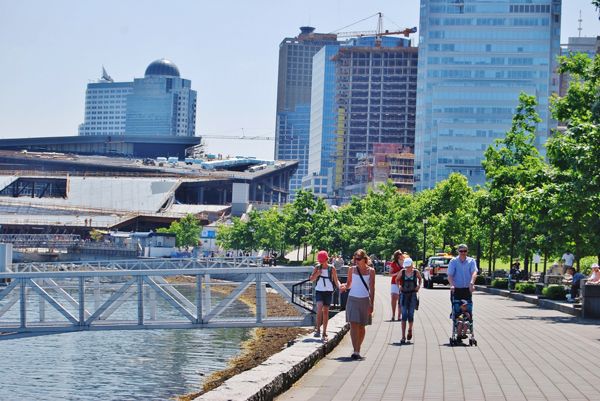
Vancouver by Lissandra-Melo-
-
Street Trees for Safety
Street trees can slow vehicular traffic by an average of 7-8 mph (11-13 kph). By incorporating trees into the streetscape at a density of one per 15-20 feet (4.5 m – 6 m), not only does the local environment benefit from the well-known effects of reduced heat island effect and power consumption, and improved stormwater management; but also, streets become safer. A 2006 study by Kathleen L. Wolf notes that street trees resulted in reductions in traffic accidents of around 45%.
-
Pocket Parks
The inclusion of well-designed pocket parks may seem like an obvious aid to increase the walkability of neighbourhoods, but their placement and distances between them need careful consideration.
In walkable neighbourhoods, several small pocket parks encourage walking through their accessibility by foot. The National Recreation and Park Association recommends placing pocket parks within a five to ten-minute walk of its users. This translates to a maximum interval distance of not greater than 1.2 miles or 2 kilometres between parks. Pocket parks should be placed along well design routes and be designed with site specificity in mind. They may take the form of urban squares, green parks, community gardens, or community orchards. They should be placed at nodal spaces and be supported with surrounding mixed-use development.
-
Linear parks and urban greenways
There have been some famous examples of linear parks retrofitted to existing infrastructure in recent history, notably the infamous Highline and Promenade Plantée. This trend for linear parks has been picked up in projects including, The Green Line in New York and The Meadoway in Toronto. The Madrid Rio project by West 8 and MRIO arquitectos goes even further and integrates large linear green spaces like Salón de Pinos and relocating a major road and parking underground to accommodate the Avenida de Portugal, a vibrant new public open space.
Urban Greenways
In terms of walkability the often-underappreciated smaller sibling of the linear park, the urban greenway, has much to offer. Urban greenways provide many of the same benefits of linear parks, but on a smaller, and often more affordable scale. One of the main benefits of greenways over linear parks is that they take up less space. Much like pocket parks, urban greenways can facilitate walking at a local scale, provided they connect with useful nodal spaces that are not too far from each other. One key consideration when designing greenways is visibility and safety. Chuck Flink, founder of Greenways Incorporated urges that, although greenways have a lower than average crime rate, they should be designed so that users feel safe. He suggests regular exit/entry points to not only increase connectivity, but also the feeling of safety as users have regular ‘escape routes’. Visibility lines should be kept clear by the careful consideration of planting, preventing places that people can hide in.
All Walks of Life
Walkable cities have numerous social, economic, and health benefits. At the strategic level, increasing density and mixed-use development, and placing an emphasis on the pedestrian can facilitate walkability in a city.
Landscape architects can make a substantial impact on the walkability of neighbourhoods through the inclusion of well-designed green infrastructure. A carefully considered tree-lined streetscape can calm traffic, improve aesthetics, and provide a safe environment for pedestrians. Well placed pocket parks can act as attractors, encouraging people to walk from place to place. Linear parks and urban greenways provide physical structure for walking, as well as a more attractive option than travelling by vehicle. The key to successful implementation of any of these is good site-specific design and integration with the surrounding urban fabric.
—
LEAD IMAGE: Pedestrians by Free-Photos CC00



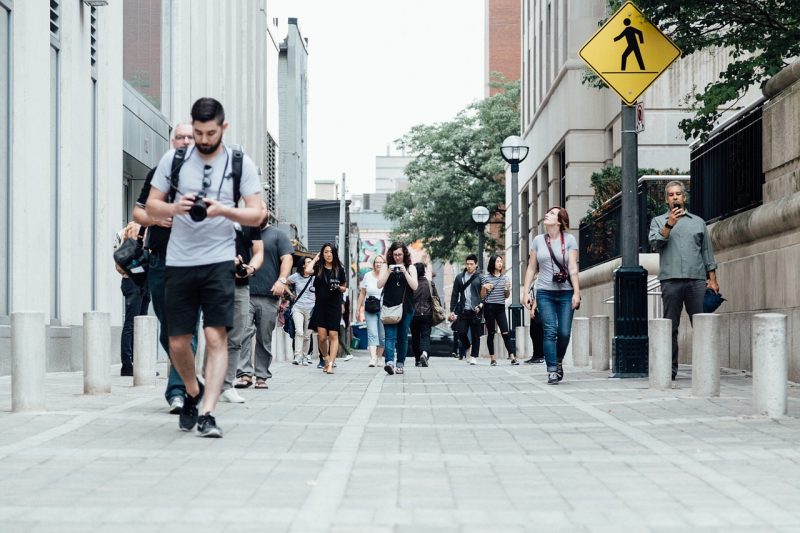
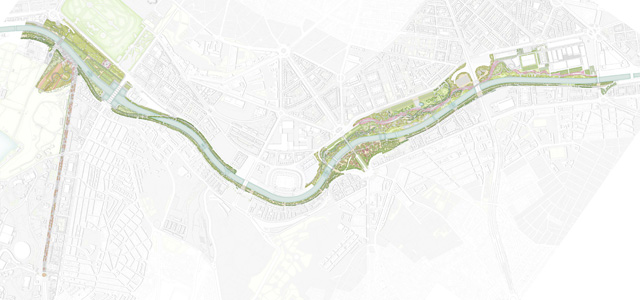

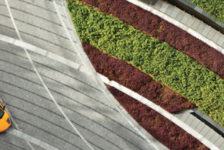

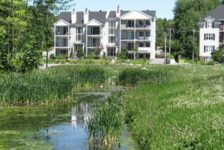



J. Robert (Bob) Wainner
While I “still” enjoy driving my BMW Z3 convertible sports car…..I really don’t drive around much since I’ve been retired now for a couple of years. BUT, I agree with almost everything written in this article.
I believe walkable cities (that also include bicycles) is a good step in the right direction for America.
A very good “case in point” is if you take a good look at what has been going on in CHINA. Many citizens in China “used” to walk or ride bikes everywhere……then, their economy began to BOOOOOM, big time. So, more and more people began buying and driving cars….instead of walking and biking. The results are terrible!!! The air pollution in China and other SE Asian Nations is so bad, the air is barely breathable. My wife and I watch Asian Dramas on Netflix…and you can see in almost every TV Drama…how terrible the air quality is. I mean, you can SEE how bad it is over there.
I have to admit though, I am “against” the U.S. joining the Paris Agreement…..that was created to solve air and water pollution around the World. IMO, every Nation should be responsible for the own CO2 and water pollution problems……..U.S. taxpayers should NOT be responsible for paying for ANY foreign Nations’ air pollution or water quality problems. We can maybe help “educate” them on HOW to resolve their problems. Even though President Trump has relaxed many of former President Obama’s EPA regulations, I still believe that the U.S. is far ahead of a majority of the World’s nations on cleaning up our own environmental problems.
Good Article!
J. Robert (Bob) Wainner
Jolma Architects
Hi Bob,
Many thanks for your considered thoughts and comments. Thank you for highlighting China. You make an interesting point. We’re glad you liked the article.
Kind reagrds
J. Robert (Bob) Wainner
P.S. from Bob…….Thinking further about this issue of “walkable cities”. I’ve lived in the Dallas-Fort Worth area for the better part of my life. In this major metropolitan area…..you MUST have a “car”. It’s very flat and spread out. Nothing is close. People who commute to work, especially to the downtown Dallas or Ft. Worth areas…probably drive 45 minutes to 1 hour each way. Figure the unproductive hours every week/month……spent driving! And, all the CO2!
I know it would take MANY years to create smaller, walkable communities…but, it does make a lot of sense….to be able to walk or ride a bike to the store, to the drug store, to a movie theatre, restaurant, etc.
Between these “walkable communites” maybe it would be necessary to drive a car….take a bus or ride a train.
Dallas does have a Mass-Transit Rail System……but, it’s NOT a good system. It’s not safe. There are no police officers on the rail cars, so, it’s too risky to use this form of transportation. The City of Dallas won’t spend the money to put armed police officers on those rail cars.
Again, GREAT article!
Bob
Pingback: Urban landscapes « Harmony Gardens
vijay raman
As a matter of fact, i really like the way the principles governing the planning and implementation for a “walkable city” been put forward in this article. Commendable, but wish this principles and effort could be adopted by various cities in Asian cities, in particular Kuala Lumpur in Malaysia. I believe a concerted urge and public voices of the urbanites and local authority would make happen effectively.
Jolma Architects
Hi Vijay,
Thank you for taking the time to read the article and comment. I’m sure you are right in this. We can do our part by trying to raise awareness.
BR, Ashley, Jolma Architects.